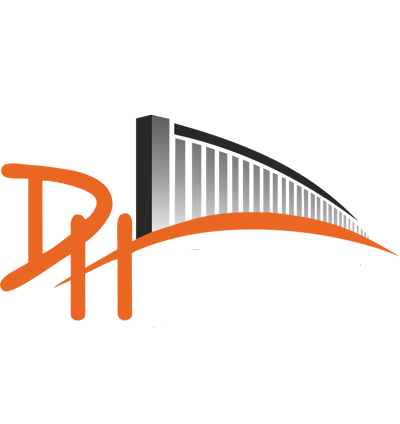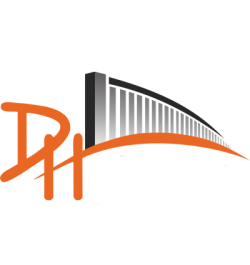Livestock Fencing Companies: What Is Best For Southern Alberta?
Stopping livestock from leaving your property can be a challenge. Whether you’re dealing with cattle, horses, or sheep, all have different needs. To find the best livestock fencing for you and your farm’s needs, one must ask a few questions before purchasing.
Challenges that Livestock Fencing Companies see in Southern Alberta
Due to the severe weather conditions, livestock fencing in Southern Alberta can be challenging. The wind, snow, and cold can all take a toll on fences, making them less effective at keeping livestock contained. As a result, it is crucial to choose the right type of livestock fencing company to work with for your operation. Several types of fences are popular in Southern Alberta, each with its advantages and disadvantages.
Barbed wire fences are one of the most popular choices for livestock fencing in Southern Alberta. They are relatively inexpensive and easy to install, making them a good option for small operations. However, barbed wire fences can be difficult to repair if the weather damages them, and they are also not as effective at containing larger animals such as cattle.
Pipe fencing is another popular choice for livestock fencing in Southern Alberta. Pipe fences are more expensive than barbed wire fences, but they are much more durable and can withstand harsh weather conditions. Pipe fences are also easier to repair if they are damaged. However, they can be challenging to install and are not as effective at containing smaller animals such as sheep.
Electric fences are becoming increasingly popular for livestock fencing in Southern Alberta. They are highly effective at
What Types of Livestock Fencing Works Best in Southern Alberta?
If you’re considering putting up a fence to contain your livestock in Southern Alberta, you might wonder what type of fence is best for the job. Here are a few things to consider when making your decision:
What type of animals will you be fencing in?
Different animals require different types of fencing. For example, horses are notorious for trying to jump over fences, so you’ll need a fence that’s tall enough to deter them from doing so. On the other hand, cattle are more likely to try and push through or walk under a fence, so a sturdier, taller fence is needed to keep them contained.
- How big is your budget?
Fencing can be an expensive endeavor, so it’s important to consider how much money you’re willing to spend on materials and labor. If money is no object, then you have more options available to you. However, working with a limited budget, you might have to get creative with your fence design. - What is the purpose of the fence?
Are you looking to keep predators out or contain your livestock? If you’re trying to keep predators out, then you’ll need a fence that can serve multiple purposes.
Fence Height that Livestock Fencing Companies Consider
When choosing the right fence height for your livestock, there are a few things to consider. If you have animals prone to jumping, like sheep or goats, you’ll want to ensure your fence is tall enough to deter them from escaping. For animals that are more likely to try and dig under your wall, like pigs, you’ll want to ensure the fence is buried deep into the ground. And finally, for animals known to be climbers, like llamas or alpacas, you need to make sure your fence is tall enough and has an overhang on the top so they can’t get a foothold.
In general, most livestock fences should be at least 4 feet tall. But again, it depends on the type of animal you’re fencing in. If you’re not sure what height is best for your livestock, talk to us or your veterinarian for advice.
Materials that are Permanently Installed vs. Semi-Permanently Installed
There are a lot of factors to consider when choosing the right type of fence for your livestock. One crucial factor is whether you want a fence that is permanently installed or one that is only semi-permanently installed.
Permanently installed fences are generally more expensive, but they will last longer and require less maintenance over time. If you have the budget for it, a permanently installed fence is usually the best option.
semi-permanently installed fences are less expensive and can be moved if necessary. However, they may not last as long as a permanently installed fence and will require more maintenance over time. As the semi-permanent fences get moved around, they can be damaged.
How a Livestock Fencing Company designs your fence
Regarding livestock fencing, there are a few things you need to consider to build a fence that will work best for your situation. Here in southern Alberta, we have to deal with a lot of variation in weather and terrain, so it’s important to build a fence that can withstand whatever nature throws our way.
One of the first things you need to consider is what type of animals you’ll be keeping inside the fence. Every kind of animal has different needs when it comes to fencing. For example, cattle are much larger than sheep and require a more substantial fence that won’t collapse under their weight. On the other hand, sheep are more prone to escape than cattle, so you’ll need to ensure your fence is tall enough and has no gaps for them to squeeze through.
Next, you need to take into account the terrain around your property. If you have a lot of hills and uneven ground, it’s going to be more complicated – and expensive – to build a fence that will stay put. In this case, it might be worth considering an electric fence, which is easier to install on uneven terrain. Electric fences are also a good option if you’re dealing with predators.
Training Your Animals to Respect the Boundaries of the Livestock Fence
One of the most important aspects of having a fence is training your animals to respect the boundaries. This can be a challenge, especially with larger animals, but it is important to take the time to do it right. Here are some tips for training your animals to respect your fence:
-Start with a small area. It may be tempting just to put up the fence and let your animals roam free if you have a large property. However, starting small and gradually expanding the fenced area is important. This will give your animals time to get used to the fence and learn to respect its boundaries.
-Be consistent. Once you have put up the fence, it is important to be consistent with its use. Do not let your animals out of the fence unless you are sure they will stay within the boundaries. If they test the limits of the fence, make sure to correct them, so they understand that they are not allowed to cross the boundary.
-Use positive reinforcement. Reward your animals when they stay within the fence line. This can be something as simple as a treat or extra attention. By using positive reinforcement, you will help your animals associate staying within the fence with something positive.
Many different types of fencing are available, and each has its advantages and disadvantages. The best type of fence for your livestock will depend on your specific needs and the area in which you live. Contact us, an expert in livestock fencing, if you have any questions about what type of fencing would be best for your situation.

